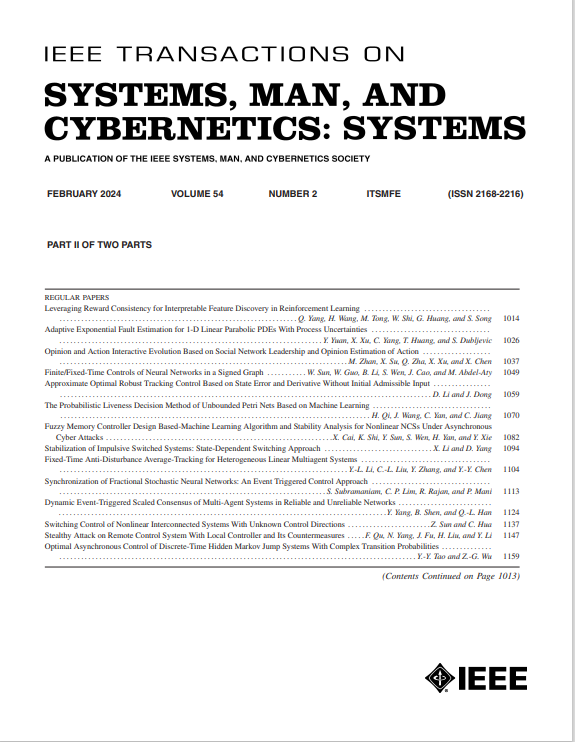基于增强特征金字塔网络的不平衡感知沟渠缺陷分割
IF 8.7
1区 计算机科学
Q1 AUTOMATION & CONTROL SYSTEMS
IEEE Transactions on Systems Man Cybernetics-Systems
Pub Date : 2025-07-08
DOI:10.1109/TSMC.2025.3579706
引用次数: 0
摘要
不平衡的数据集在现实场景中是一个重大挑战。它们会导致模型在代表性不足的类上表现不佳,这是基础设施检查中的一个关键问题。本文介绍了增强型特征金字塔网络(E-FPN),这是一种用于不平衡数据集中涵洞和下水道管道语义分割的深度学习模型。E-FPN结合了架构创新,如稀疏连接块和深度可分离卷积,以改进特征提取和处理对象变化。为了解决数据不平衡问题,该模型采用了类分解和数据增强等策略。在涵洞-下水道缺陷数据集和两个基准数据集上的实验结果表明,E-FPN优于最先进的方法,分别实现了16.2%、27.2%和28.82%的平均交汇比(IoU)改进。此外,类分解和数据增强一起将模型的性能提高了大约6.9%。提出的E-FPN为在具有挑战性的多类别真实数据集中增强目标分割提供了一种很有前途的解决方案,其潜在应用范围超出了涵洞-下水道缺陷检测。本文章由计算机程序翻译,如有差异,请以英文原文为准。
Imbalance-Aware Culvert-Sewer Defect Segmentation Using an Enhanced Feature Pyramid Network
Imbalanced datasets are a significant challenge in real-world scenarios. They lead to models that underperform on underrepresented classes, which is a critical issue in infrastructure inspection. This article introduces the enhanced feature pyramid network (E-FPN), a deep learning model for the semantic segmentation of culverts and sewer pipes within imbalanced datasets. The E-FPN incorporates architectural innovations like sparsely connected blocks and depth-wise separable convolutions to improve feature extraction and handle object variations. To address dataset imbalance, the model employs strategies like class decomposition and data augmentation. Experimental results on the culvert-sewer defects dataset and two benchmark datasets show that the E-FPN outperforms state-of-the-art methods, achieving an average intersection over union (IoU) improvement of 16.2%, 27.2%, and 28.82%, respectively. Additionally, class decomposition and data augmentation together boost the model’s performance by approximately 6.9% IoU. The proposed E-FPN presents a promising solution for enhancing object segmentation in challenging, multiclass real-world datasets, with potential applications extending beyond culvert-sewer defect detection.
求助全文
通过发布文献求助,成功后即可免费获取论文全文。
去求助
来源期刊

IEEE Transactions on Systems Man Cybernetics-Systems
AUTOMATION & CONTROL SYSTEMS-COMPUTER SCIENCE, CYBERNETICS
CiteScore
18.50
自引率
11.50%
发文量
812
审稿时长
6 months
期刊介绍:
The IEEE Transactions on Systems, Man, and Cybernetics: Systems encompasses the fields of systems engineering, covering issue formulation, analysis, and modeling throughout the systems engineering lifecycle phases. It addresses decision-making, issue interpretation, systems management, processes, and various methods such as optimization, modeling, and simulation in the development and deployment of large systems.
 求助内容:
求助内容: 应助结果提醒方式:
应助结果提醒方式:


